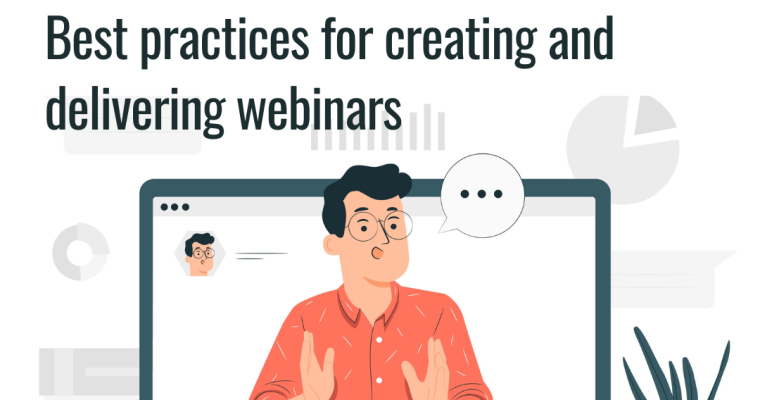Webinars have become an increasingly popular format for delivering e-learning content, as they offer a flexible and convenient way to provide training and education to a wide audience. However, creating and delivering a successful webinar is not as simple as just going live on a video call. There are a number of best practices that e-learning service companies should keep in mind in order to create engaging and effective webinars.
Some best practices for creating and delivering webinars include:
- planning the content and format in advance
- testing the technology and equipment before the webinar
- promoting the webinar ahead of time
- providing clear instructions for attendees on how to join
- using visuals and multimedia to enhance engagement
- keeping the webinar interactive by allowing attendees to ask questions
- providing handouts or other materials for attendees to follow along with
- recording the webinar for future reference
- allowing attendees to provide feedback after the webinar.
Planning the content and format in advance
First and foremost, it is important to plan the content and format of the webinar in advance. This includes deciding on the main topics to be covered, identifying the target audience, and determining the appropriate length of the webinar. It is also important to create a clear outline or script for the webinar, and to practice delivering the content beforehand.
Testing the technology and equipment before the webinar
Next, it is important to test the technology and equipment before the webinar. This includes making sure that the audio and video quality is good, that the slides and other materials are functioning correctly, and that the webinar platform is working smoothly. This will help ensure that there are no technical issues during the live webinar.
Promoting the webinar ahead of time
Promoting the webinar ahead of time is also critical for its success. This includes sending out email invitations, promoting the webinar on social media, and creating a landing page for attendees to register. It’s important to provide clear instructions on how to join the webinar, and to send out reminders to attendees before the webinar starts.
Using visuals and multimedia to enhance engagement
Once the webinar begins, it’s important to use visuals and multimedia to enhance engagement. This includes using slides, images, and videos to supplement the audio and video content. It’s also important to keep the webinar interactive by allowing attendees to ask questions and providing a chat function.
Providing handouts or other materials for attendees to follow along with
Providing handouts or other materials for attendees to follow along with is also a great way to enhance the webinar experience. This can include a PDF of the slides, a worksheet for attendees to complete, or additional resources for attendees to refer to later.
Recording the webinar for future reference
Another important aspect is to record the webinar for future reference. This can be useful for attendees who were unable to attend the live webinar, or for those who want to revisit the content later.
Allowing attendees to provide feedback after the webinar
Lastly, it’s important to allow attendees to provide feedback after the webinar. This can be done through a survey or by providing a contact form. It’s important to listen to the feedback and use it to improve future webinars.
By following these best practices, e-learning service companies can create engaging and effective webinars that are well-received by attendees and achieve the goals of the training or education program. With the right planning and execution, webinars can be a powerful tool for delivering e-learning content and creating a lasting impact on learners.







